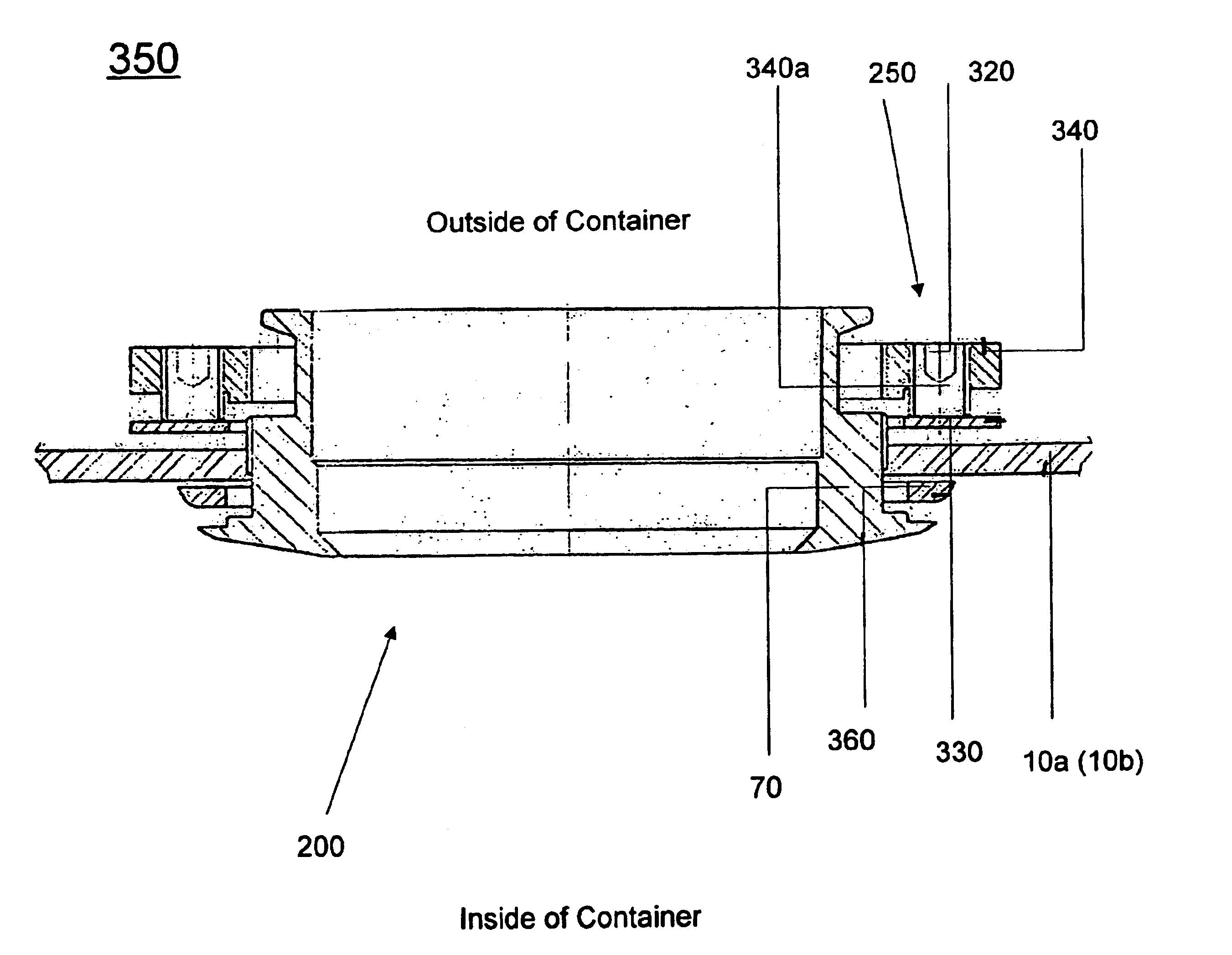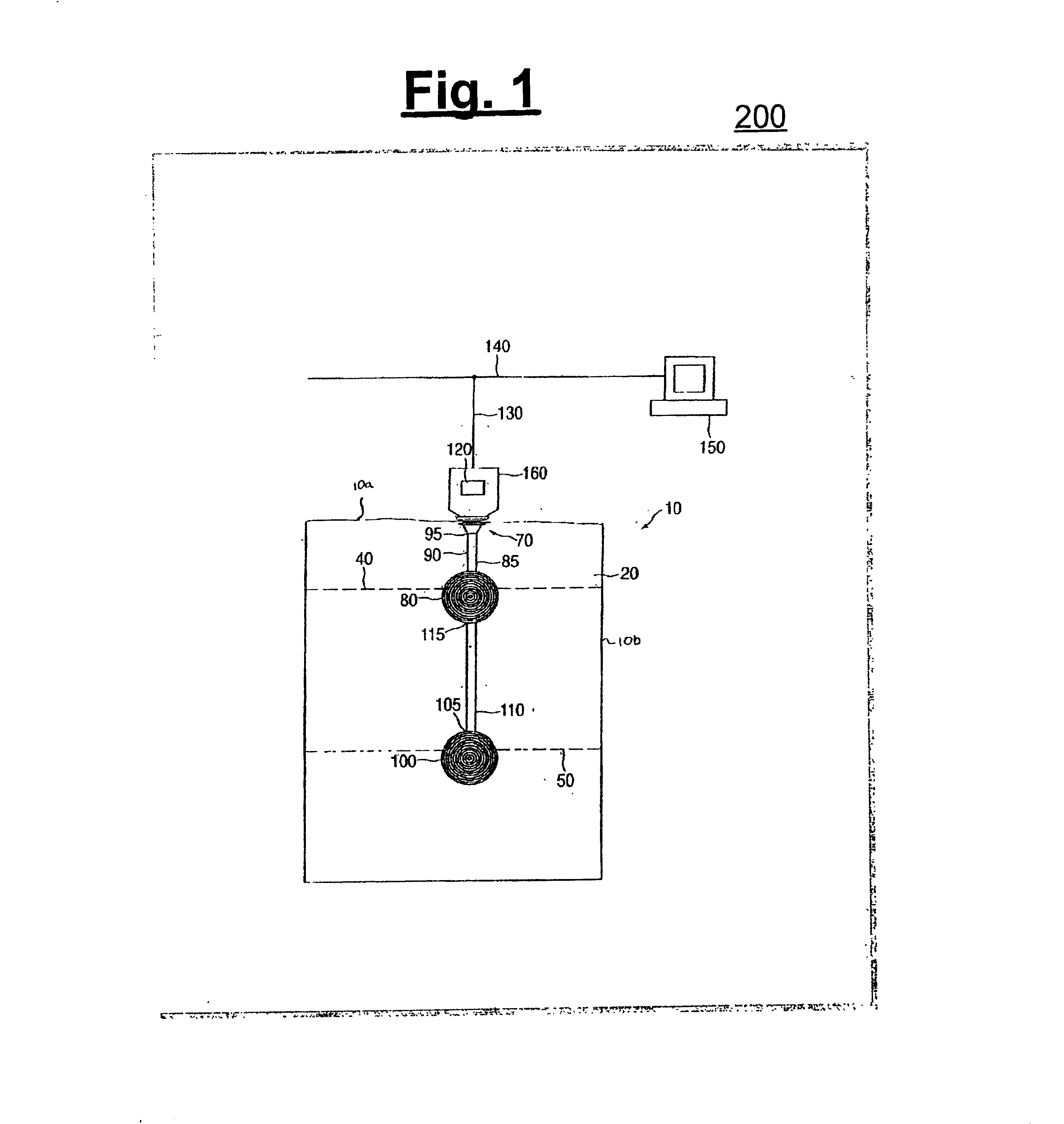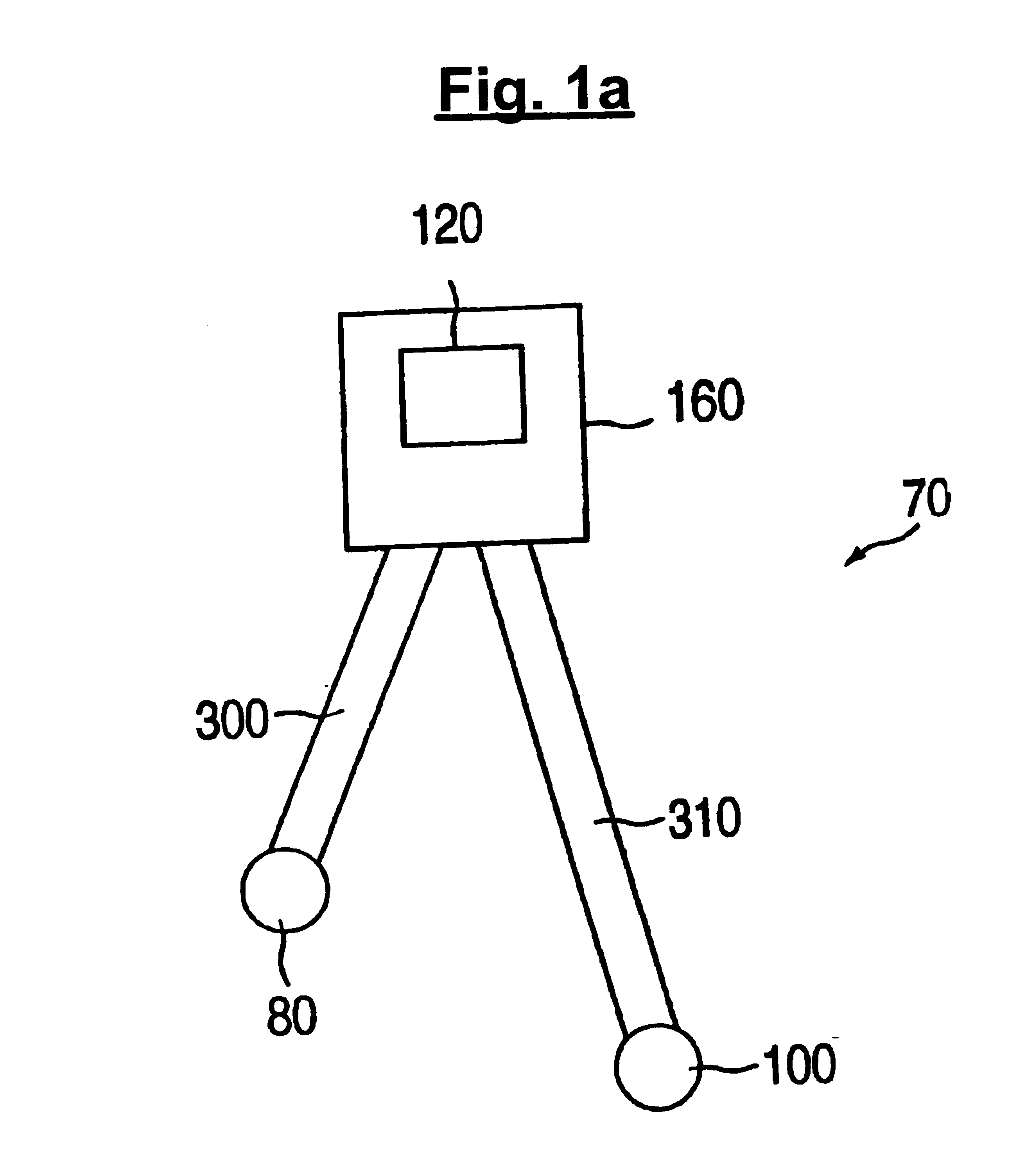One of the advantages of the present invention is that an assembly and a method for affixing the assembly to a container are provided which is adapted to be affixed to a container without piercing (e.g., without penetrating) a surface of the container, e.g., without forming holes through the container. Another
advantage of the present invention is that elements of the assembly which are positioned inside the container preferably do not have sharp edges or roughened surfaces, such that residue may not collect on those elements of the assembly which are positioned inside the container. For example, the elements of the assembly which are positioned inside the container can be manufactured from a flexible material, such as rubber. Consequently, the fluid inside the container would not be adversely affected by the elements of the assembly which are positioned inside the container.
is that elements of the assembly which are positioned inside the container preferably do not have sharp edges or roughened surfaces, such that residue may not collect on those elements of the assembly which are positioned inside the container. For example, the elements of the assembly which are positioned inside the container can be manufactured from a flexible material, such as rubber. Consequently, the fluid inside the container would not be adversely affected by the elements of the assembly which are positioned inside the container.
These and other advantages can be realized with an exemplary embodiment of the present invention, in which an assembly adapted to be affixed to a container (e.g., a tank) containing fluid, and a method for affixing the assembly to the container are provided such that contact pressure is applied to a surface of the container (e.g., using a first arrangement). In this manner, a second arrangement is affixed to the container without piercing the surface of the container. Specifically, the first arrangement may be positioned in the vicinity of an opening or a fore in the container, and the second arrangement (e.g., a sensor arrangement) may include a portion situated within the opening. Moreover, the first arrangement can be adapted to
affix the second arrangement to the container without piercing a surface of the container by applying the contact pressure to the surface (e.g., an exterior surface) of the container.
In another exemplary embodiment of the present invention, the second arrangement can include a housing arrangement, and a portion of the housing arrangement may be positioned inside the container, or the housing arrangement can be entirely situated outside the container. The housing arrangement can contain a first sensor fluid and a second sensor fluid, such that the housing arrangement prevents the first sensor fluid and the second sensor fluid from mixing with the sample fluid. The second arrangement also can include a first sensor positioned within the container or situated outside the container at a first
fluid level. The first sensor can be connected to the housing arrangement, and may be adapted to detect a
fluid pressure at the first
fluid level by acting on the first sensor fluid. Similarly, the second arrangement can include a second sensor positioned within the container or situated outside the container at a second
fluid level which is below the first fluid level. The second sensor can be connected to the housing arrangement, and may be adapted to detect a
fluid pressure at the second fluid level by acting on the second sensor fluid. The second arrangement may further include a
transmitter positioned outside the container.
The
transmitter can be coupled to the housing arrangement, or may be positioned inside the housing arrangement, and the
transmitter is adapted to communicate with the first sensor via the first sensor fluid and with the second sensor via the second sensor fluid. The transmitter also may be adapted to generate a
signal corresponding to a density of the fluid. Moreover, the second arrangement may include a calculating device coupled to the transmitter, which is adapted to calculate the density of the fluid based on the
signal.
In still another exemplary embodiment of the present invention, the first arrangement can include one or more securing elements (e.g., a threaded element, such as a bolt or a screw) positioned outside of the container. Each securing element may be directly or indirectly connected to the housing arrangement, and can also be adapted to apply the contact pressure to the surface of the container without piercing the surface of the container. For example, each securing element can apply the contact pressure to the exterior surface of the container when rotated in a predetermined direction. The first arrangement also can include a contact member (e.g., a
washer) positioned between a corresponding securing element and the container. As such, each securing element may apply the contact pressure to the surface of the container via the corresponding contact member. The first arrangement can further include a plate having a hole or a plurality of holes formed therethrough. The plate can be connected to the housing arrangement, and each hole may be adapted to receive a securing element.
 Login to View More
Login to View More 


